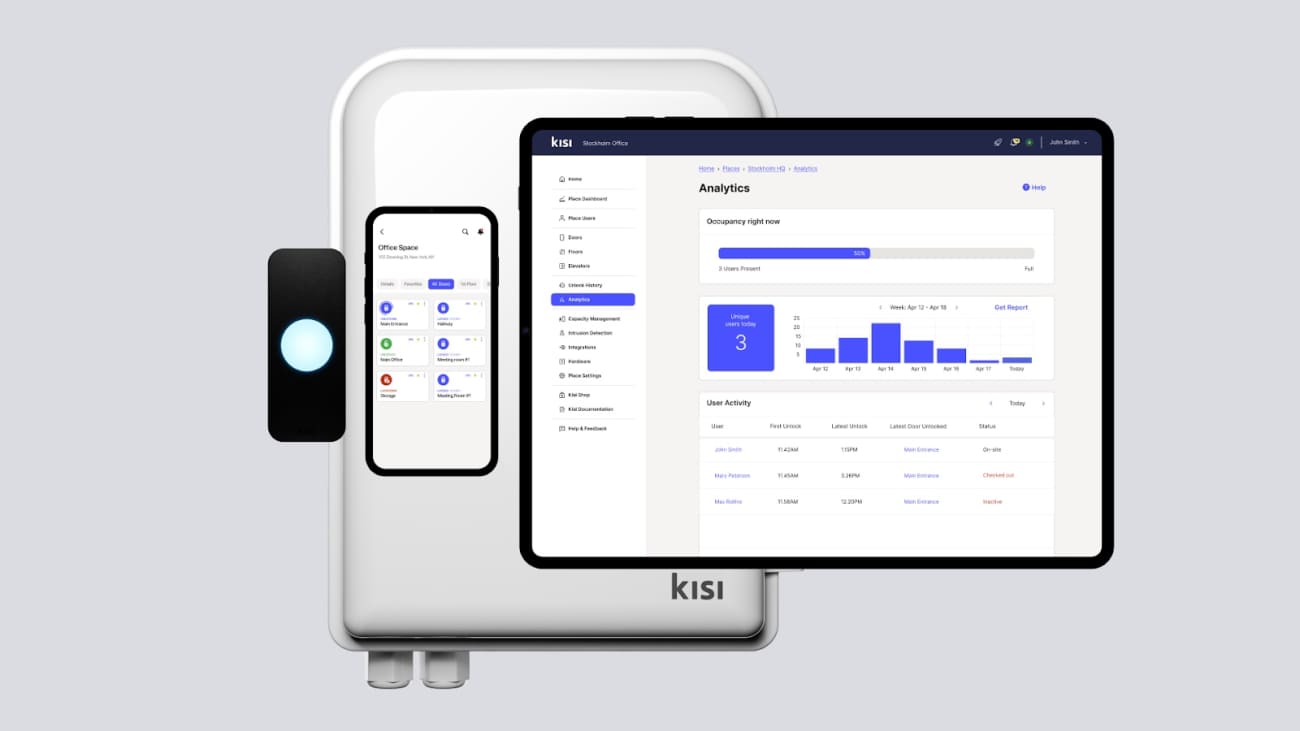The office is where we spend most of our time after our homes. Due to constant changes, offices are evolving, and businesses are adapting their physical spaces to stay competitive.
More than 80 years ago, the factory floor-like tightly packed rows of desks slowly transitioned into seemingly more flexible and private cubicles. Today, we might take telephones, personal computers, and email for granted, but not so long ago, they were a big technological breakthrough giving way to new possibilities for where, when, and how we can work.
There was a time when these now everyday concepts were the modern technology change some people had to deal with. Just as the pandemic forced us to transition from spacious, mostly open office spaces to our digital home offices.
Are we on the brink of another major change, as most businesses are trying to bring employees back to the office? The office occupancy data confirms that most work schedules in the modern workforce are hybrid. Yet the commercial real estate market is headed towards a crisis. Current office spaces are not designed for hybrid work and they are underutilized.
Are fractional offices the best solution for the underused office spaces? Is access control the modern technology that will shape and enable the modern office?

What are fractional offices? #
Fractional offices are a type of flex space setting where two or more companies can use the same office space during different pre-set times. They provide the benefits of private office space for companies that don't do in-person work for 5 days a week. If the typical hybrid company pays for the office space regardless of how often people are coming in, fractional offices enable businesses to pay just for the time they need and use the space.
For example, let's imagine two hybrid companies. The first one requires people to come to the office on Mondays and Fridays. The other is asking for employees to be in person from Tuesdays to Thursdays. They can rent out the same office space, maximizing the utilization while cutting down costs.
The benefits of fractional offices #
Cost efficiency and monetization potential #
Paying full-time for an office space that is used a few times a week doesn’t make much financial sense. Fractional offices mean companies can pay only for the days or hours they use the space. Companies that have already leased larger office space that they don’t utilize for a longer period, on the other hand, can share their space with the right match and monetize it.
Real estate flexibility #
The shift toward more flexible spaces, including fractional offices, impacts the industry where long traditional leases were the norm. Even though the average lease length was shortened by 3 years compared to the previous period, it still averaged 8 years from 2020-2024.
Since startups and growing businesses often experience unpredictable expansion, long traditional office leases can be a burden, given the need to scale up or down quickly. Fractional offices often provide flexible, short-term leases, allowing businesses to adjust space usage as their workforce and workplace policies change.

Improved space and location #
Companies maturing from coworking or shared workplaces to fractional offices can enjoy more privacy, easily available room choices, and the right working hours. Some companies migrating from traditional full-time offices can get state-of-the-art spaces at much more attractive locations, often at a reduced price.
Sustainability #
Office sharing, which fractional offices encourage, can increase sustainability by reducing carbon emissions associated with real estate. When multiple companies share the same office space, they also share energy and resources, reducing energy consumption and emissions, like heating, cooling, and lighting.
As we mentioned above, the possibility for better and more accessible locations should reduce the need for long commutes, encouraging more sustainable transportation options. The possibilities for better amenities fractional offices offer, like bike storage rooms, can also reinforce this.
The challenges of fractional offices #
Security #
Fractional offices are more complex when it comes to security than multi-tenant buildings. When multiple tenants use the same spaces, ensuring only authorized individuals have access to specific areas and mitigating potential security threats and risks can be challenging. Modern access control systems are necessary in fractional offices to minimize the risk of unauthorized entry, theft, and data breaches.
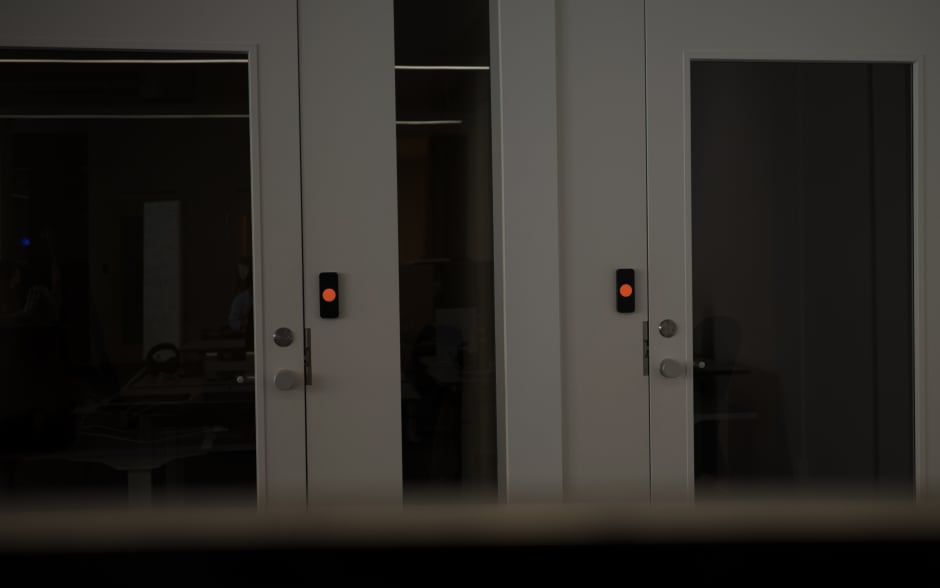
Management and operations #
Office operators may have trouble managing several tenants with different space and amenities needs, lease agreements, schedules, and access requirements. Coordinating logistics, maintaining shared technology and resources, and accommodating different tenant requests can overwhelm property managers. Coworking management software can be essential in centralizing and automating tenant management, billing, scheduling, and access.
Privacy and compliance #
Fractional offices can attract businesses from various industries and regulatory requirements. When employees from different companies work in the same space, challenges related to data security, safety regulations, and legal obligations can arise. In some cases, operators might need to ensure compliance with various regulatory standards while also managing safety and liability concerns across shared spaces. Working with legal experts and implementing robust security measures and tech will help comply with privacy laws and industry standards.

Branding and maintenance #
Establishing the company’s brand identity can be tricky within a shared environment, especially with shorter leases where tenants may leave when their businesses grow or change. Some may struggle to create a professional image for clients or partners without personalized branding or dedicated office space.
Fractional offices and other flex spaces tend to have higher turnover and heavy usage of shared spaces like conference rooms, kitchens, and common areas compared to regular office spaces, leading to faster wear and tear – often increasing maintenance costs.
Clear communication, setting expectations, and establishing maintenance schedules can decrease tenant dissatisfaction and increase retention. Some landlords can even offer premium maintenance packages as part of the rental agreement.
Tech integration #
Evident from the challenges listed above, fractional offices require modern technology systems, like access control and coworking software to work as seamlessly as possible. Choosing, managing, and maintaining reliable tech infrastructure for multiple tenants, particularly when dealing with different software platforms or security protocols, can create headaches for both operators and tenants. Invest in scalable, cloud-based solutions offering comprehensive support and vast integration libraries to ensure seamless integration of security tech, especially access control and coworking software, billing, and booking systems.
The role of access control in managing fractional offices #
Most challenges fractional offices face, including security, compliance, management, and tech integrations, can be addressed with a comprehensive access control solution.

What is access control? #
Access control systems are security technologies that regulate who and during which times can enter specific areas within a building. Tenants can authenticate with various credentials, including mobile devices, keycards, fobs, QR, or PIN codes. These systems allow admins to control and monitor access in real-time, providing a secure and efficient way to manage multiple users across different areas. Advanced access control systems like Kisi offer additional functionalities, like remote access management, instant notifications, and customizable dashboards.
Essential in fractional offices, access control systems ensure only authorized tenants and staff can enter designated zones during the pre-agreed times, minimizing the risk of unauthorized access or breaches. The customizable permissions, various integrations, and remote management enhance security while streamlining tenant onboarding and offboarding, making them vital for managing the dynamic, shared environments typical of fractional offices.
Advantages of access control for fractional offices #
Access control systems enhance security and operational efficiency. Modern access systems, like Kisi, can also streamline the user experience, leading to better retention rates. Let’s sum up the primary benefits.
- Enhanced security: Access control ensures that only authorized employees can enter predetermined areas during certain times, reducing the risk of unauthorized access or security breaches. This is crucial for protecting sensitive information and preventing unauthorized users from entering private or restricted spaces in the fractional office or the shared office unnoticed during busy times.
- Flexible access management: Landlords and office operators can easily manage multiple tenants and user groups, granting or revoking the right level of access remotely and automatically with access control.
- Seamless onboarding and offboarding: Mobile access credentials allow for swift on- and offboarding without the need for issuing or returning physical credentials. Connecting access control with SSO or SCIM can additionally streamline the experience for both operators and users, enhancing security.
- Streamlined operations: Automated access control reduces the need for on-site security personnel and manual credential management, lowering operational costs. The system can ensure the right entry permissions for different user groups that fit under specific access schedules, eliminating operational inefficiencies.
- Data and reporting: Modern access control systems offer reporting features that provide occupancy data, like who accessed specific areas and when. By monitoring space usage, you can optimize security protocols, ensure compliance with safety regulations, and come up with strategies for improved space utilization, leading to increased profitability.
- Future-proof and scalable: As fractional offices evolve and grow, access control systems can easily scale to accommodate new users or expanded office areas, making them a cost-effective and future-proof solution.
- ROI: Automated access systems cut down operational costs. The average company can save $100 per person even in the first year, and this can mean much bigger savings for the fractional office where more than one company uses the same office space. Automated access can also enable additional revenue streams, so fractional offices can offer extended hours or even 24/7 access without hiring additional staff.
Step-by-step guide to setting up fractional offices with access control #
Step 1: Evaluate your current space #
Before deciding on the access control solution, assess your current office environment and fractional space potential. If you already use the office space or have tenants determine which areas or times are underutilized and suitable for fractional use. For an effective evaluation, consider the following:
- Location: Is the office in a desirable location for potential tenants? Proximity to business hubs, public transport, and amenities can drive demand.
- Demand: Understand the local market and analyze the demand for fractional offices. Research potential tenants and gauge interest from relevant hybrid companies. Consider different security and compliance requirements.
- Layout and amenities: What type of companies can your space layout and set up support? Can different companies use the same space without endangering privacy and compliance? What’s the distribution of private office spaces and common areas like meeting rooms, lounges, and kitchens?
- Rooms and doors: Which doors and rooms will the tenants share and need to access? Determine the doors you have to control access to, like the entry door, elevator, or file room, and then the entry points that would be nice to be secured, like the windows, meeting rooms, and printer.
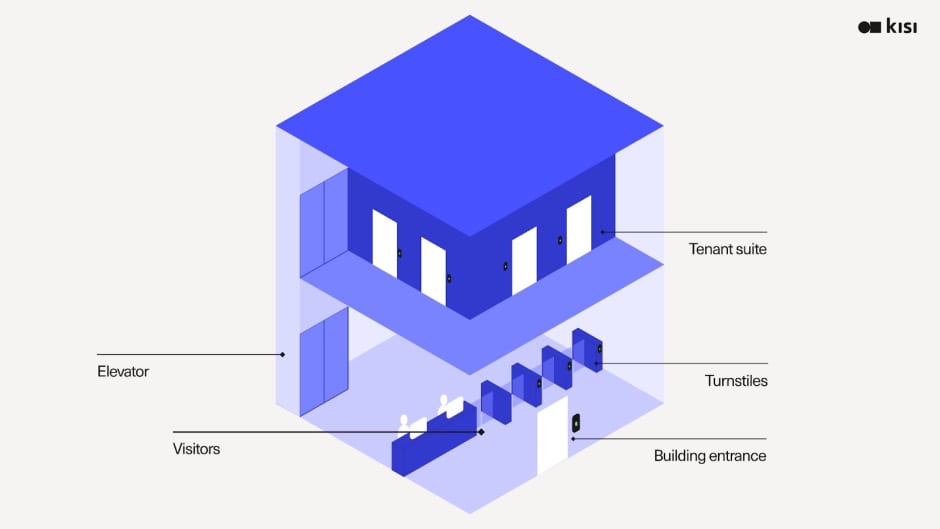
Step 2: Implement the right access control system #
Once you’ve identified potential tenants, underutilized times, and entry points that need to be secured, it’s time to decide on the right access control system that meets the needs of your fractional office. Consider the following criteria:
- Cloud-based management: Opt for a cloud-based system that allows you to manage access remotely. Besides being able to grant and revoke access on the fly, cloud-based systems offer real-time alerts, OTA updates, automated on- and offboarding, and much more.
- Deployment options: Look for an open and customizable access system. Some solutions, like Kisi, offer tailored deployment paths based on your needs and setup. If you already have some access hardware in place, you can gradually migrate to a modern, cloud-based system.
- Mobile credentials: Choose systems that allow tenants to unlock doors with their phones. Eliminate lost or misplaced physical credentials for improved security and increase flexibility and convenience for both admins and users.
- Integrations: Ensure the system integrates with coworking or property management software for seamless operations. Consider which other systems you’d like to integrate, like video cameras, alarms, directories, or communication software.
- Scalability: The ability to add new devices, users, locations, and apps without compromising system performance or security ensures that as your fractional office grows, your security infrastructure can expand effortlessly alongside it, maintaining operational continuity and efficiency.
- Visitor management: Streamlining and automating the check-in process is becoming more important as one office space accommodates more businesses with different compliance and security needs. Choose a system with extensive visitor access, tracking, data, and alerting capabilities.
Once you choose the access provider, order the hardware you need, like access controllers and readers, so you can be ready to set up the software and automate access to your fractional office. Contact our security experts if you need help deciding on the right access hardware for your fractional office.

Step 3: Integrate access control #
Integrate your access control system with other technologies, like coworking software, video surveillance, alarms, and sensors, to streamline onboarding and create a fully automated and secure fractional office. Consider the following integrations:
- Coworking or flex software: Automate space bookings, tenant onboarding, and billing. This integration allows tenants to reserve meeting rooms or private offices and access them seamlessly via mobile credentials. Automated workflows reduce the need for manual intervention and provide a more efficient, user-friendly experience.
- Video surveillance: Track and monitor entry points in real-time. When someone enters or exits the building, the surveillance system can automatically record and associate video footage with specific access events, making potential security breaches in the fractional office easier to detect and resolve.
- Alarm systems: Automatically trigger alarms if unauthorized access is detected or if someone tries to force entry. Deploy a multi-layered security approach to promptly respond to potential emergencies.
- Sensors and intrusion detection: Incorporate sensors, such as motion detectors, door position sensors, and break-in alarms, so your access control system can alert you if a door is tampered with, held, or propped open.
- Directories and identity management: Another option besides coworking software to automate on- and off-boarding and ensure access privileges are always up to date with automated provisioning.
- Visitor systems: If you choose an access system that doesn’t have visitor management, you can integrate it with a third-party visitor management system to ensure all visitors have the appropriate access privileges and seamless access experiences while on your premises.
Step 4: Automate tenant access and operations #
Once integrated with relevant software and hardware, set up your access control system to maximize efficiency. Automate as many operations as possible, focusing on tenant access, schedules, and security.
- Set up access rights and schedules: Add users to specific groups and assign access rights based on their needs. Create a few groups for the different companies and set up access schedules depending on the predetermined spaces and time periods.
- Issue credentials: Deploy mobile access to minimize the chances of tenants losing or forgetting their credentials while enabling an environment-friendly and convenient access method.
- Automate on- and offboarding: Automate tenant onboarding by connecting to your directory (SCIM) or coworking software. This way, you can ensure a great user experience from day one and secure, automated offboarding where tenants can't forget to return their credentials.
- Enable admins: Onboard the appointed admins from the different companies. User-friendly access systems like Kisi require minimal training and onboarding. Yet, they’ll want to be acquainted with the system’s functionalities and decide on the type of alerts they’ll receive to increase security.
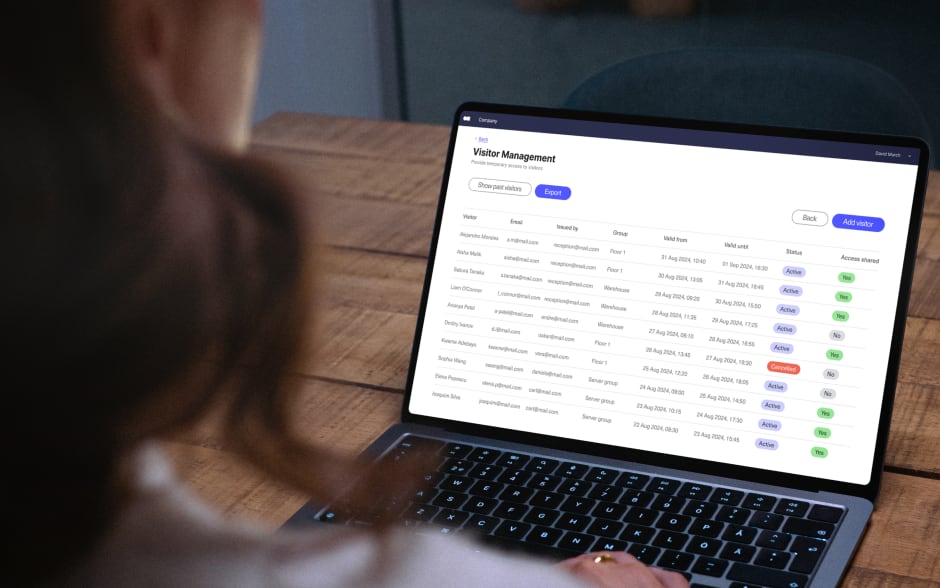
Step 5: Maximize security and compliance #
Access control systems should significantly enhance the security of your fractional office environment. Considering multiple tenants will share the same spaces, make sure to set up the following in your access control system:
- Access restrictions: Customize how and when users can access different areas. Manage when and how users enter locations by using geofencing, device-specific restrictions, and access schedules. For maximum security, restrictions should be applied to both groups and doors.
- Notifications and alerts: Set up actionable alerts to stay informed of critical access control events. Some access systems, like Kisi offer real-time alerts when there are too many access denials across your doors, or when there is unusually high usage of digital credentials to help you detect and investigate potential misuse or breaches. This feature safeguards your access control system from unauthorized access attempts. You should also set alerts when doors are held or propped open.
- Intrusion detection: Set up separate security zones for different tenants or areas within a building. Set up distinct schedules and access policies for each zone, providing tailored security based on the tenants’ needs.
- System updates: Regularly update the access control system’s software to patch vulnerabilities and enhance features. Periodic audits of the system can help identify potential security gaps. Modern access systems, like Kisi, offer fully managed, consistent over-the-air (OTA) firmware updates to ensure your devices are always up-to-date.
Step 6: Utilize reporting to increase profitability #
Advanced access control systems often include reporting tools that track tenant usage and space occupancy. Leverage this data to increase profitability by optimizing the use of your fractional office space:
- Occupancy and usage patterns: Monitor which areas of your office are being used the most and which areas are underused to optimize space utilization. For instance, if certain rooms are consistently underutilized, consider promoting them to potential tenants or restructuring leases to increase demand.
- Access trends: Review access data to understand peak hours and times of lower occupancy. You can adjust pricing models to reflect demand, like charging a premium for high-demand time slots. You could also experiment with extending hours or even inviting an additional tenant during the lower occupancy times.
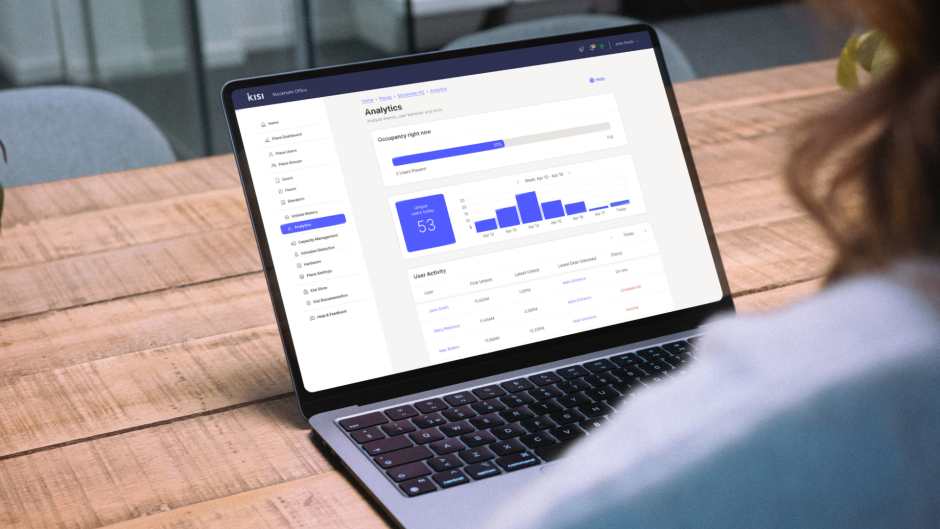
Profit from fractional offices with modern access control #
Fractional offices are a promising, forward-thinking solution to the hybrid work model and policies. Supporting landlords and tenants, this new model aims to maximize underutilized spaces while providing all parties the necessary flexibility.
If these concepts once seemed impossible or really tricky to execute, advanced access control makes them not only achievable but the go-to choice for the modern office where most operations are automated. What’s more, by integrating robust access control systems with the rest of the tech stack, like coworking software, a seamless, secure, and efficient office experience is guaranteed.
Besides the enhanced security and tenant satisfaction, access systems also open new revenue streams, enabling businesses to optimize their space and profitability and keep up with the evolving market and demand. Get a demo of how modern access control can work for you.

Vera Eftimovska
Marketing Campaign Manager at Kisi, blends her psychology background with hands-on experience in access control and workplace security. Passionate about how technology and human behavior intersect, she shares insights that help businesses build resilient, future-ready, and security-driven workplaces.



